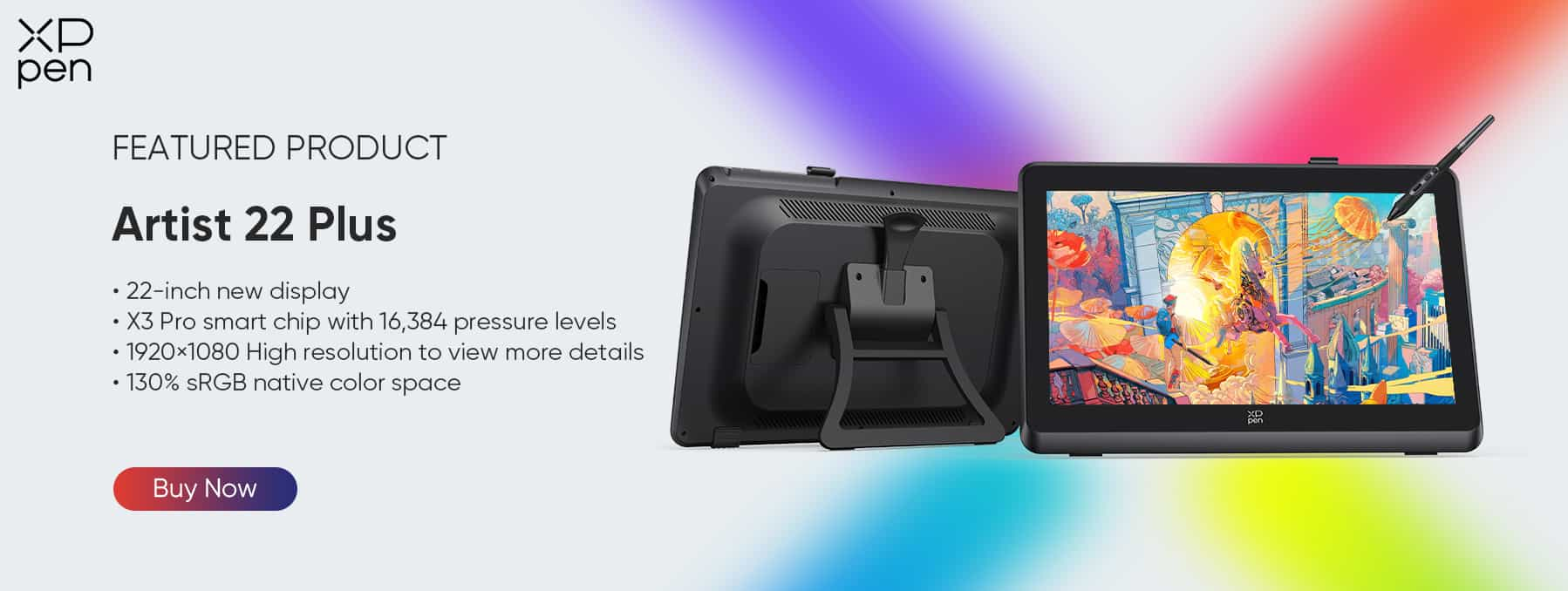
Is Drawing Tablet a Must-have for 3D Design?
TIPSIs a drawing tablet necessary for 3D design? There are many different software and workflows used to create artwork in the 3D space, so it can be difficult to put a definitive "yes" or "no" on this question. Although all 3D art can "technically" be done with only a mouse or a trackpad, there are some disciplines in the 3D world that nearly require a tablet for an artist to maximize their creative abilities.
Is drawing tablet a must-have for 3D design?
It is widely agreed-upon by 3D artists that a drawing tablet is an essential tool for those who engage in "sculpting" workflows. In a similar fashion to that of that traditional clay sculptor, the artist usually starts with a sphere and molds it into their desired form using a wide array of sculpting tools. Many standard software packages such as Maya, Cinema 4D, and Blender offer the ability to "sculpt"; however, the vast majority of 3D sculptors prefer to use ZBrush. A tablet allows the artist to interact naturally with their model and provides a sculpting experience closer to working with a physical ball of clay. Additionally, tablets' pressure sensitivity feature is invaluable as it allows the artist to vary their stroke intensity by merely pressing harder onto the screen. Without this function, it can be challenging to get an organically sculpted shape as each stroke takes on an identical width and depth.
Another common task that many 3D artists prefer to use a tablet for is painting textures onto their models. Although most 3D software offer some amount of functionality for painting on models, many artists choose to use either Mari or Substance Painter for this process. Similar to the benefit provided in a sculpting workflow, using a tablet to paint in the 3D space is much more natural (than using a mouse or trackpad) as the artist can feel like they have a brush in their hand to apply color and texture to their models. The pressure sensitivity feature provided by drawing tablets is crucial as it allows the artist to create realistic strokes that vary in width and opacity. This effect is impossible to achieve with a mouse.
Sculpting and painting are just two of a tablet's practical applications in the 3D space. There is a multitude of other niche manners in which a drawing tablet can improve a 3D artist's creative experience. For example, one of Maya's hair and fur generation systems (XGen) can be interactively groomed with a "Comb Tool", which pairs perfectly with a tablet-style workflow. Or, the process of painting weights onto individual vertices in the character rigging process to assign how a skeletal rig is bound to the model's skin. In many of these processes, a tablet's central value is the same: allowing the artist to interact with their work more naturally than clicking and dragging with a mouse.
It is important to keep in mind that while it is "technically" possible to engage in any of these workflows without a drawing tablet, doing so may impact your creative abilities due to the limitations that come with a mouse - an inability to control pressure and the inherent difficulty of creating natural gestures by clicking and dragging. That being said, the vast majority of general 3D work can be done comfortably with a mouse - and in many situations, a tablet could potentially slow down and inhibit a 3D artist's workflow. Examples of this would include general hard-surface polygonal modeling projects, standard animation routines, creating procedural motion graphics, and look development for rendering - to name a few.
Plenty of 3D artists never touch ZBrush or Substance Painter, and would be unable to find a practical application for a drawing tablet in their workflow. It is more than possible to become a successful 3D artist with or without a tablet - ultimately, it comes down to what types of 3D projects you work with and which software packages you are comfortable using.
Best drawing tablets for 3D design
What's the best drawing tablet for 3D design. Here we will introduce XPPen Artist 22 Plus to you. The XPPen Artist 22 Plus lies a fusion of state-of-the-art technology and ergonomic design, meticulously crafted to meet the demands of professional artists and enthusiasts alike. Boasting a generous 21.5-inch IPS display with Full HD resolution (1920x1080), this pen display delivers vibrant colors, crisp details, and wide viewing angles, ensuring every stroke and hue is faithfully represented with stunning clarity.
One of the standout features of the XP-Pen Artist 22 Plus is its advanced pen stylus technology, which provides an unparalleled level of precision and control. With 16,384 levels of pressure sensitivity and 60 degrees of tilt recognition, artists can achieve nuanced brush strokes and lifelike textures, allowing for a seamless transition from traditional to digital media.
Whether you're a digital illustrator, graphic designer, or multimedia artist, the XP-Pen Artist 22 Plus is poised to revolutionize your creative process. Its combination of cutting-edge technology, ergonomic design, and intuitive functionality makes it the ultimate tool for bringing your artistic vision to life with unparalleled precision and flair.
About the Author
Jake Fellman is a 3D motion designer specializing in product visualization animation. He has been working as a freelance artist for six years and teaching digital design (in-person and online) for the past two.
About Us
Originated from 2005, XPPen is now one of the top brands under HANVON UGEE, integrated with digital drawing products, content and service as a globally notable digital brand of digital art innovation.
Learn moreRecommended Articles
ROUNDUPS 6 Best Drawing Tablets for 3D Modeling and Sculpting in Blender and Zbrush in 2025 ROUNDUPS 8 Best Drawing Tablets for Animation 2D & 3D – A Must-Have for Animators






